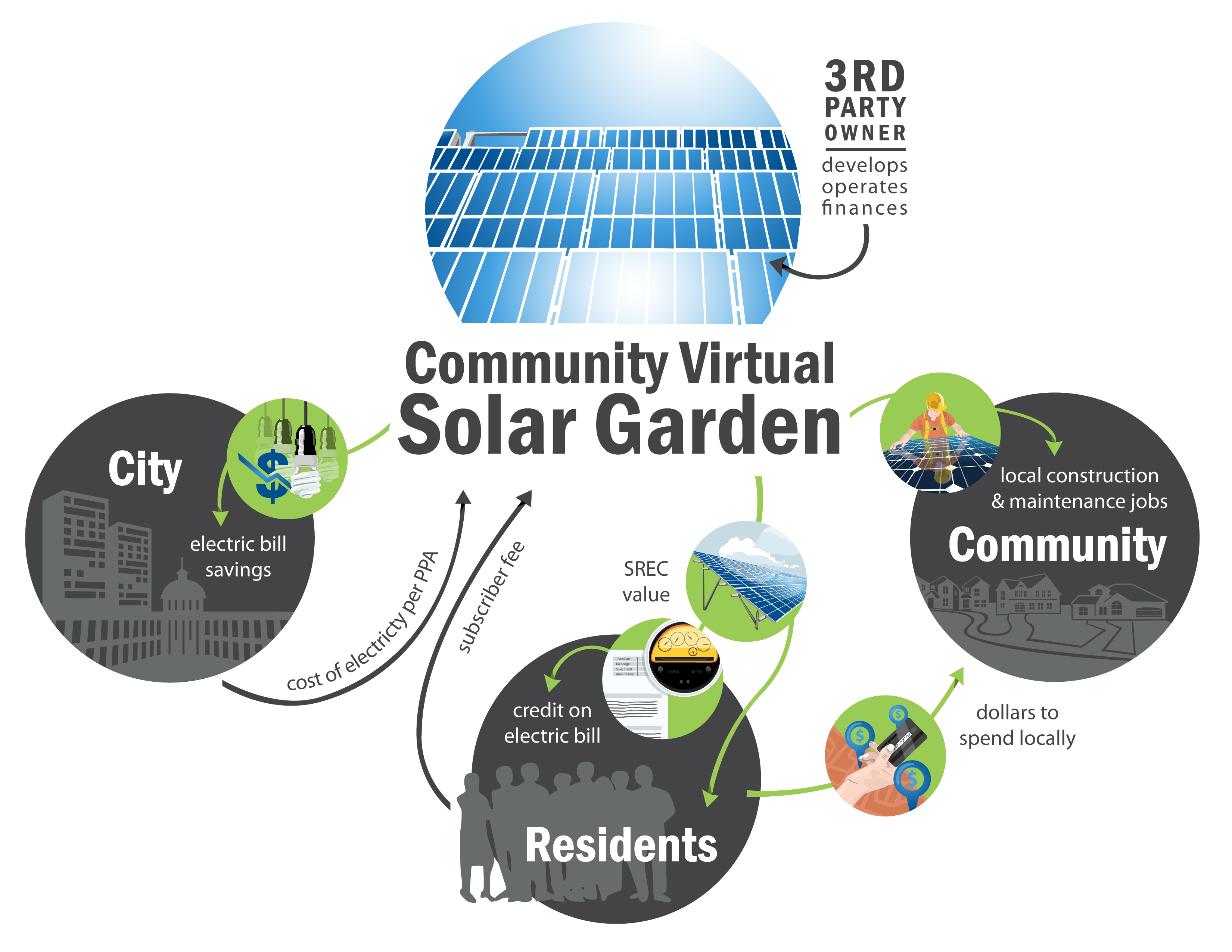
Communities are increasingly embracing the concepts behind asset-based economic development, which includes sustainable development. After all, it’s much easier to build on the assets already available—people, infrastructure, natural resources—than to try and develop something completely new, right?
But how do you turn the sun and energy users into economic growth for your community? The solution is already being implemented in communities across the United States: community solar gardens.
Planting the Seeds
At its core, a community solar garden allows a community to generate and use renewable electricity through the use of photovoltaic solar panels and to distribute the financial benefits among residents. Let’s take a look at how this translates to economic growth.
A community solar garden starts with the selection of a host site within the community for the desired solar array. This may be the roof of a community building, like a city hall or school, or such land adjacent to a community building as at a wastewater treatment facility. The only other requirement is that the host site has the ability to use the electricity from the solar array.
Once a site has been selected, the owner of the host site enters into a power purchase agreement (PPA) with the developer of the community solar garden. This PPA contains two important economic development stipulations:
- The developer is financially responsible for building and maintaining the solar system.
- The host or local government is responsible for purchasing the power generated by the system.
With the developer bearing sole financial responsibility for the solar system, both in building and maintaining it, the community’s pockets are untouched; no capital outlays are required, and there is no need to budget operating funds to the project. This allows the community to use its limited financial resources on other development projects.
The PPA also allows the host to purchase electricity at a cheaper rate than it currently pays. This saves the community money, while also giving price security against rising energy prices over the next 20 to 25 years, which is especially important for managing community budgets. With a PPA in place, the developer can begin erecting the solar array, bringing tangible economic development to the community.
Like anything might, solar gardens present some risks to the community. Locking in a rate of power for 20 to 25 years can result in higher electricity costs in the future if electricity prices don’t rise as expected. This is unlikely given impending regulation against coal-fired power plants, which have provided cheap power, but this possibility must still be considered.
Also, placing a large solar array on a public building may detract from the aesthetic appearance of a community to some eyes, which may be important to residents and to local government staff. Committing to a community solar garden also means foregoing any other project for that particular space, which may be especially important if a parcel of land is considered as a host site.
To begin with, building a solar array for a community solar garden requires construction. These are local jobs for an industry that has been hard hit in recent years. And once constructed, the solar array will continue to support jobs for its upkeep and maintenance. Jobs are the essence of economic development, and that is exactly what a community solar garden provides for a community, with no local government investment required.
Watching It Grow
Once the community solar garden is built, residents and businesses can begin subscribing to it by purchasing the production value of the solar array’s panels. Subscribers to the solar garden receive a monthly credit on their electric bill that corresponds with the energy production of the garden and how many panels they purchased.
If you, for example, as a resident subscribed to 1 kilowatt (kW) of your community’s array and it produced 1,000 kilowatt hours (kWh) in a month, and the host site pays $0.10/kWh for electricity from the solar array, you would receive $100 to use against your electric bill that month.
With community members spending less on their electricity, more funds are available to spend supporting the local economy. When you consider that money spent within the local community is three to four times more likely to be re-spent within the same local community; known as the local multiplier effect, these savings can potentially be turned into exponentially increased economic activity for a community. This means that if you spent half of that $100 you received at local businesses; it will result in more than $200 of local economic activity.
Beyond the credit received on subscribers’ electric bills, they may also receive additional income from the sale of the environmental attributes generated by their panels. Each panel will help produce Renewable Energy Certificates (REC), which can be sold by the developer, providing a subscriber with cash for its value a couple of times a year, and injecting more capital into the local economy.
And let’s not forget the cost savings residents achieve by subscribing to the community solar garden as opposed to investing in solar on their own homes. These savings can amount up to 40 to 50 percent for the same electricity output, which can mean thousands of dollars back into the hands of community members.
For the 75 percent of residents, according to a 2008 study by the National Renewable Energy Laboratory, who can’t invest in home solar because they are renters or have structural or shading issues on their property, a community solar garden affords them an opportunity to receive the benefits of solar energy.
New, Reduced Membership Dues
A new, reduced dues rate is available for CAOs/ACAOs, along with additional discounts for those in smaller communities, has been implemented. Learn more and be sure to join or renew today!
